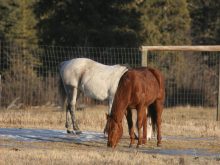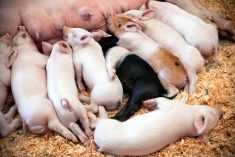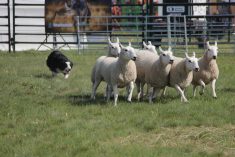EDMONTON – A decision to end Alberta’s winter culling program in search of wild deer with chronic wasting disease is welcome news by the Alberta farmed elk industry.
Glenda Elko, chair of the Alberta Elk Commission, said the ending of the program in which government staff shot wild deer in areas where positive cases of CWD had been identified is not effective.
“Every other jurisdiction that has done culling by government is no longer doing it because it’s not effective,” said Elko, an elk producer from Lloydminster.
Read Also

Why selenium is still an important factor in horse health
Selenium is an essential equine trace mineral that supports antioxidant defense, muscle integrity, immune function, metabolism and thyroid activity.
CWD is found in 11 states and two provinces: Alberta and Saskatchewan.
Saskatchewan no longer tries to control the spread of CWD in wild deer and elk populations. A few years ago, Alberta moved from trying to eradicate the disease to trying to contain it to areas along the Saskatchewan border.
Alberta has 61 confirmed cases of CWD in wild deer, the majority found through the winter culling program in the four years since it was implemented. More than 45,000 farmed and wild cervids have been tested since the CWD program was implemented in 1996.
“CWD hasn’t spread like wildfire,” said Elko pointing to other areas with CWD with thriving wild elk populations.
“What can’t get lost in this is the government culling that went on found extremely low prevalence.
“It’s not that prevalent. We learned that through the culling, and why continue at that rate?”
Margo Pybus, Sustainable Resource Development’s wildlife disease specialist, said the end of the winter program has removed an important tool in monitoring and controlling the disease.
Heads submitted by hunters revealed two new cases of CWD during the fall hunt. In previous years, fish and wildlife staff would focus the winter killing program on areas where hunters found CWD in the fall.
“I think the program had evolved into a one-two punch. Find it in the fall and get rid of it or find others in the winter. We now need to find a delivery mechanism where we can still achieve targeted response but we have to find another tool.”
Pybus said in 2007 hunters found two cases in the fall. The winter culling program found another eight.
“Had we not done the winter program, those eight deer would have stayed on the landscape potentially affecting other animals. I see no barriers to the further spread of the disease.”
In a study of public awareness and support of CWD management responses presented during a prion disease conference, 70 percent of Albertans said they had heard of CWD, 95 percent said wildlife is important to the environment and 80 percent said the government should try to eliminate the disease, although they didn’t know the best solution.
“The vast majority want to see some action taken,” said Vic Adamowicz of the University of Alberta, one of the authors of the study.
In a different study on hunter attitudes toward CWD, hunters revealed they would avoid areas with high rates of CWD, said Peter Boxall of the University of Alberta.
“There is evidence the number of trips actually declines in CWD areas,” he said.
“More hunters will avoid CWD areas. Our results show hunters support the management efforts and are willing to pay more to avoid the worst case scenario areas.”














